
REFRACTORIES AND INDUSTRIAL CERAMICS
metrics 2024
Fostering Excellence in Refractory and Ceramic Innovations
Introduction
REFRACTORIES AND INDUSTRIAL CERAMICS is a prestigious journal published by Springer, dedicated to the field of ceramics and composite materials. With an ISSN of 1083-4877 and an E-ISSN of 1573-9139, this journal plays a pivotal role in fostering advances in the development, formulation, and application of refractories and industrial ceramics. The journal has been actively publishing since 1996 and is recognized for its contribution to the academic discourse in the ceramics community. Although it currently holds a Q4 ranking in both Ceramics and Composites and Materials Chemistry categories, it serves as an important platform for emerging research trends and innovations, making it essential reading for researchers, professionals, and students engaged in material science. While access is not open, the journal ensures that high-quality research reaches its audience, reflects the evolving landscape of the ceramics industry, and encourages interdisciplinary collaboration.
Metrics 2024
 0.19
0.19 0.40
0.40 0.50
0.50 21
21Metrics History
Rank 2024
Scopus
IF (Web Of Science)
JCI (Web Of Science)
Quartile History
Similar Journals
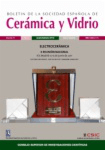
BOLETIN DE LA SOCIEDAD ESPANOLA DE CERAMICA Y VIDRIO
Shaping the Future of Industrial Engineering through Open AccessBOLETIN DE LA SOCIEDAD ESPANOLA DE CERAMICA Y VIDRIO, published by Elsevier, is a premier open-access journal dedicated to advancing research in the fields of Ceramics and Composites, Industrial and Manufacturing Engineering, and Mechanics of Materials. With an impressive impact factor and a strong ranking within its categories—Q2 in 2023 for multiple engineering domains—it serves as a vital resource for academics, industry professionals, and students alike. The journal has embraced an open-access model since 2015, providing widespread accessibility to the latest findings and innovations in ceramic and glass sciences, thus encouraging collaboration and knowledge sharing within the global research community. Published quarterly, and with a focus on interdisciplinary applications, the BOLETIN DE LA SOCIEDAD ESPANOLA DE CERAMICA Y VIDRIO is not only influential in shaping research agendas but also essential for anyone engaged in the evolving landscape of materials science.

PHYSICS OF METALS AND METALLOGRAPHY
Pioneering Research in Condensed Matter and MetallographyPhysics of Metals and Metallography, published by MAIK Nauka/Interperiodica/Springer, is a respected journal dedicated to the study of the physical properties of metals and their metallographic analysis, offering invaluable insights for researchers, professionals, and students in the fields of condensed matter physics and materials chemistry. With an ISSN of 0031-918X and an E-ISSN of 1555-6190, the journal has a rich history that spans from 1970 to 2024, reflecting a long-standing commitment to advancing knowledge in this vital area of materials science. Although it currently does not offer Open Access options, its strong placement in the academic landscape is underscored by its Q3 ranking in both Condensed Matter Physics and Materials Chemistry, according to 2023 metrics, and a Scopus ranking that places it within the competitive percentile of its fields. The journal is particularly important for those engaged in the cutting-edge research and technological applications of metals and alloys, making it an essential resource for anyone looking to deepen their understanding or contribute original findings to this dynamic discipline.
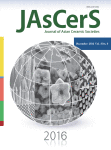
Journal of Asian Ceramic Societies
Advancing ceramic innovation across Asia.The Journal of Asian Ceramic Societies, published by Taylor & Francis Ltd, is a peer-reviewed open-access journal that has been at the forefront of ceramic research since its inception in 2013. With an ISSN of 2187-0764, this esteemed journal is dedicated to advancing the scientific understanding of ceramics and composites, bolstered by an impressive ranking of Q2 in the field of Materials Science. Covering a wide range of topics pertinent to ceramics, the journal aims to foster collaboration among researchers, professionals, and students across Asia and beyond. Its commitment to accessibility allows a global audience to engage with cutting-edge research, reflected in its Scopus ranking of #45 out of 127 in the Materials Science category. With a publication timeline extending to 2024, the Journal of Asian Ceramic Societies is an indispensable resource for anyone looking to stay informed on the latest developments and innovations in ceramic technology.

JOURNAL OF CERAMIC PROCESSING RESEARCH
Connecting Scholars to Shape the Future of CeramicsJOURNAL OF CERAMIC PROCESSING RESEARCH, published by the Korean Association for Crystal Growth, Inc., serves as a vital source of scholarly communication in the field of ceramics and composites. With an ISSN of 1229-9162, this well-regarded journal aims to advance knowledge through rigorous research and publication of innovative studies that push the boundaries of ceramic processing technologies. Indexed in Scopus and boasting a 2023 Q3 ranking in the ceramics category, it provides a platform for researchers to disseminate their findings and engage with emerging trends in material science. The journal reflects a commitment to contributing to the scientific community, emphasizing the importance of interdisciplinary collaboration and advancements in fabrication techniques. Although it operates under a traditional access model, the journal is a beacon for researchers, professionals, and students, inviting them to explore breakthroughs from the years 2000 through 2024 and beyond.
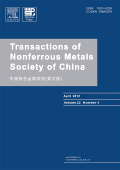
TRANSACTIONS OF NONFERROUS METALS SOCIETY OF CHINA
Pioneering research in the realm of nonferrous materials.TRANSACTIONS OF NONFERROUS METALS SOCIETY OF CHINA, published by Elsevier, is a premier academic journal that serves as a vital platform for researchers and professionals specializing in materials science, condensed matter physics, geotechnical engineering, and engineering geology. Established in 1994, this esteemed publication has maintained a robust focus on the latest developments in the nonferrous metals sector, reflecting its significant impact in the field with a Q1 categorization across multiple disciplines. With impressive Scopus rankings—placing it in the top 20% of journals in relevant categories—this journal is recognized for its quality and rigor, providing critical insights into metals and alloys, materials chemistry, and their applications. The non-open access format ensures a dedicated readership among professionals and academics seeking substantial and authoritative research articles. By fostering knowledge exchange, the journal strives to advance the understanding and application of nonferrous metals, making it an essential resource for anyone involved in material innovations and engineering solutions.
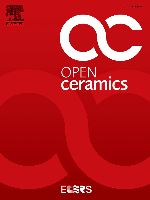
Open Ceramics
Unlocking Potential in Materials ScienceOpen Ceramics is a pioneering journal published by Elsevier, dedicated to the field of materials science, with a particular focus on ceramics and composites. Launched in 2020, this Open Access journal aims to facilitate unrestricted dissemination of cutting-edge research findings while promoting innovative developments in the utilization of ceramic materials across various applications. As of 2023, Open Ceramics has established a commendable presence in several key categories, achieving Q3 in Biomaterials and Q2 rankings in Ceramics and Composites, Electronic, Optical and Magnetic Materials, and Materials Chemistry. The journal's broad scope appeals to a diverse audience of researchers, professionals, and students interested in the advancements within this essential domain of materials science. With a commitment to quality and relevance, Open Ceramics provides a platform for rigorous peer-reviewed research, thereby enhancing the global dialogue in the field and contributing to the ongoing progress of materials innovation.

Ceramics-Switzerland
Fostering Collaboration in the World of CeramicsCeramics-Switzerland is a prominent open-access journal published by MDPI, dedicated to advancing knowledge in the field of ceramics and materials science. Established in 2018, this journal serves as a vital platform for researchers, professionals, and students to disseminate innovative research and technology in ceramics and composites. With an impressive impact factor and a categorized ranking of Q2 in Ceramics and Composites and Q3 in Miscellaneous Materials Science for 2023, Ceramics-Switzerland signifies its growing influence and contribution to the scientific community. The journal is indexed in Scopus, where it boasts a rank that highlights its competitive standing within the field. Being an open access journal enables the wide distribution of research findings, fostering greater collaboration and knowledge sharing among scholars and industry experts globally.

Transactions of the Indian Ceramic Society
Unveiling Insights in Ceramic ScienceTransactions of the Indian Ceramic Society is a distinguished journal published by Taylor & Francis Ltd, focusing on the vital field of ceramics and composites. With an ISSN of 0371-750X and an E-ISSN of 2165-5456, this journal serves as a crucial platform for disseminating cutting-edge research and innovations in ceramic materials science. Operating since 1941, it has established a solid reputation within the academic community, currently holding a Q3 ranking in the Ceramics and Composites category according to the 2023 Scopus rankings. Though not an open-access journal, it provides a wealth of insights and findings that can significantly impact both theoretical and practical applications in materials science. The journal aims to facilitate knowledge exchange among researchers, professionals, and students, thereby pushing the boundaries of what is possible in the world of ceramics. It is a valuable resource for anyone looking to advance their understanding and contribute to this ever-evolving field.
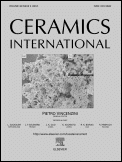
Ceramics International
Exploring the forefront of materials innovation.Ceramics International is a premier journal published by ELSEVIER SCI LTD, focusing on advancing the field of materials science with a specific emphasis on ceramics and composites. With an impressive impact factor and a top-tier standing in several critical categories, including Q1 rankings in Ceramics and Composites, Electronic, Optical and Magnetic Materials, and Materials Chemistry, this journal serves as a crucial resource for researchers and professionals alike. Established in 1981, it has consistently showcased cutting-edge research in various domains, including surfaces, coatings, and process chemistry technologies, making it invaluable for those advancing theoretical and practical knowledge in these areas. While access is through subscription, the journal’s rich content, profound insights, and rigorous peer-review process ensure high-quality articles that contribute meaningfully to the scientific community. By fostering innovation and collaboration through rigorous research, Ceramics International stands out as an authoritative source for those dedicated to the evolution of materials science.
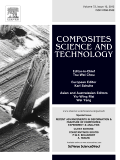
COMPOSITES SCIENCE AND TECHNOLOGY
Advancing the Future of Composite MaterialsComposites Science and Technology, a premier journal published by Elsevier Sci Ltd, serves as a vital resource in the fields of composite materials and engineering. With an impressive 2023 impact factor reflecting its influential contributions, this journal has established itself within the top tier of academic publishing, flaunting a Q1 ranking in both the Ceramics and Composites and Engineering (Miscellaneous) categories. Covering a diverse range of topics from the development of novel composite materials to their practical applications across various industries, it is recognized for its rigorous peer-review process and high-quality research outputs. As reflected in its Scopus rankings, Composites Science and Technology places in the 97th percentile among general engineering journals and the 94th percentile amongst ceramics and composites science literature. Researchers and professionals alike benefit from its comprehensive access to cutting-edge discoveries and advancements, making it an indispensable tool for driving innovation within this dynamic field.